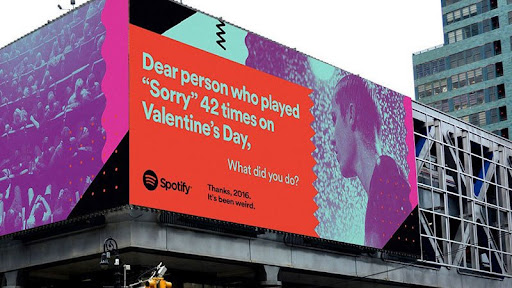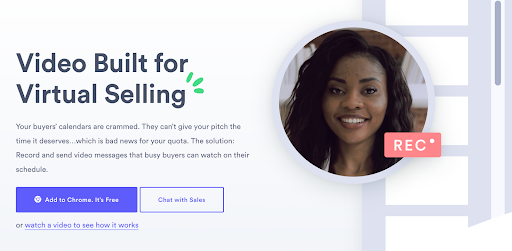The SaaS space is crowded with competition. There are probably a couple hundred thousand software products out there, and with more launching almost daily, SaaS is taking the world by storm.
Because SaaS products operate within a subscription pricing model and are completely within the digital space, marketing for these products must take a unique approach. You aren’t focused on a specific geographical area or anchored to a certain location. Your territory is defined solely by the audience you’re trying to attract.
And to get those customers interested and invested in your business, you have to cut through the noise of your competition. This means taking the time to understand your target market, defining what makes your product unique and creating a plan to communicate that to potential customers.
It’s All About Long-term Customers
Every business wants to be profitable, and the key to profitability in the SaaS industry is retaining customers.
Customer retention is a growth and profit accelerator. For one, it takes a lot less money to keep a customer than it does to acquire a new one. But more than that, the longer your customers stay with your company, the more likely they are to opt into your other services (and thus pay you more money). Your job is to continually ensure your customers are happy and find value in your services. The best way to do this is to build and maintain meaningful relationships with them.
And yes, you can do this with your marketing.
3 Ways SaaS Companies Should Market Their Products
In SaaS marketing, it’s tempting to keep your focus on the product. It might be technical or complex, so you’re naturally inclined to highlight the finer points of your software. But this approach ignores the most important component of your business model—the customer.
For most SaaS companies, interactions with customers happen through a (roughly) three-step sales process.
- Acquisition — onboarding new customers
- Monetization — getting those customers to pay for your product
- Retention — encouraging customers to continue using your product
We’ve already established that the retention stage is most important for SaaS companies. But how do you get customers to continually renew their subscription?
People stick around when they feel an emotional connection to your brand. When they feel like you understand them, empathize with them and exist to solve their problems. And because SaaS products tend to be highly specialized, you have the opportunity to engage in some highly personalized marketing.
Let’s take a look at three different ways you can relate to prospective customers and start building a strong relationship.
Know Their Pain Points
Winning customers is all about demonstrating that you truly understand their pain points and challenges, whether that’s as a business or an end user.
You should know your customers’ pain points better than they do. Put impossible problems into simple sentences to help them clearly identify what’s holding them back. Make them feel like you’ve shared their struggle through empathetic, solution-focused content and showing up in the right places at the right times. This positions you as a potential partner with the power to solve their problems.
Take Vidyard for example. They use the power of knowing their ideal customer’s pain points right on their homepage.

They know that sales people are suffering at the hands of crammed calendars and busy prospects. They can’t even find time to get a full sales pitch in, let alone close a deal. That’s why Vidyard offers a variety of 1:1 video services, so they can record their entire pitch and send it over for a prospect to watch at their convenience.
Vidyard acknowledges the problem, uses empathetic language and clearly offers its solution, all in a three-sentence description.
*P.S. – It really works. We’ve been using Vidyard for years in our sales process, and it’s helped us close millions of dollars worth of deals.
Be Creative
Every day we each receive thousands of messages that we have to sift through—text messages, emails, social media ads, the list goes on. So if everyone is buried in messaging, how do you get them to look at you? How do you make an impact?
You have to be creative.
Make them look by taking chances in your marketing campaigns and measuring the success. I’ll tell you right now, some of your ideas won’t work. But the ones that do will make a big splash.
A little background on me: I’ve been using Spotify since it came out in the U.S. back in 2011. I listen to just over 100,000 hours of music each year. Yep, 100k. I’m not ashamed. I listen at work, on my bicycle and there’s almost always a playlist jamming in the background of our house. And what keeps me coming back to their platform year after year is their creativity.
They use your listening data to create unique content targeted directly to its users. (Hello, Spotify Wrapped and Daily Mixes.) The true genius, however, is that they don’t leave this creativity in their app, they take it all the way to their marketing campaigns.

This is one of their ads from a few years ago. Note how they’re targeting a specific type of user through humor the whole audience can enjoy. It just doesn’t get better than this.
Make Evangelists
If you’re familiar with NPS scores, then you know some customers are more likely to promote your brand than others. These are the people you can turn into brand evangelists.
When you create products that truly help people and solve their problems, most of your customers will be eager to tell others about it. The key is to make your product simple enough to understand and specific enough that it quickly comes to mind during conversation.
Here are a few of my favorite SaaS brands that have created incredibly loyal customer bases:
- Dropbox — At its heart, it’s cloud-based data storage. But it’s become so popular (and is so easy to use) that plenty of companies use it as the backbone of their data operations and as a collaboration tool among teams. They even incentivize evangelism with free storage space. When current customers share the platform and new users create an account from their link, the existing customer gets some free storage. The platform has changed significantly over the years, but Dropbox is still one of the original masters of spreading product awareness.
- Uber — This is another brand that’s done a great job creating evangelists through incentives. Users can send referral code invites to their friends and receive “$20 on us” as their friends use the codes. Again, it’s changed over the years and might even be different at the time you’re reading this, but the concept is sound. Their users extend the reach of the platform by sharing with others.
- HubSpot — We can’t forget HubSpot. (In case you haven’t noticed from our blog and other content, we’re big fans.) They’ve done an amazing job creating a full-function, free CRM product. I know plenty of businesses that used this CRM to build their customer databases. Eventually, they might upgrade, but for now they’re getting tremendous value from the free product. You think they mention that to other business owners? Absolutely.
How Do You Know if Your Strategy Is Working?
So how do you measure the effectiveness of all these marketing strategies? There are a five metrics, in particular, that will tell you whether or not your efforts are producing the desired results:
- Monthly unique website visitors
- Number of subscribers
- Customer churn rate
- Number of active users
- Customer interaction rating
Monthly Visitors
The number of unique website visitors shows the effectiveness of the top of your marketing funnel. It measures how well you’re attracting leads and bringing them back to your website to learn more about your product. This number is primarily influenced by how much brand awareness you’ve built, your SEO efforts and paid media.
Number of Subscribers
AKA, the number of people that have given you their email. This directly reflects how many potential customers you’re putting in front of sales and exposing to your brand. You need a healthy amount of new subscribers signing up each month to create more opportunities to move them down your funnel.
Customer Churn
You’re probably tired of hearing it, but SaaS brands don’t stay profitable if they don’t retain customers. Customer churn rate is a red flag indicator when it surpasses a certain level. If you have a high turnover rate, you need to figure out why and how to fix the problem.
Active Users
Your active users can be measured in a number of ways, but you should always determine how many subscribers regularly use your product. (The most common data points to follow for this metric are usage patterns and frequencies.) Customers who aren’t using your product regularly aren’t as likely to renew their subscription, so finding them early and engaging them can help you retain them.
Interaction Rating
Lastly, your customer interaction rating looks at the status of your customer relationships. Are there any people experiencing consistent problems? Anyone not able to access the features they want? Monitoring how your customers feel about your brand helps you determine who’s a committed client and who’s at risk of canceling their subscription. Choosing criteria to measure customer satisfaction and nipping problems in the bud is one of the best ways to reduce your customer churn.
Start Expanding Your Customer Base
SaaS marketing requires coordination with many areas of a company — a considerably different approach than traditional industries. But just because it’s different doesn’t mean it’s difficult. All of the information in this article can be used as the foundation for a SaaS marketing strategy that builds revenue and momentum towards company objectives.
Feel free to schedule a call with us if you want to talk more about building out a strategy for building revenue in your brand. If you’re looking to work with experts on your marketing, we have all the tools and resources to help you create a stronger brand and grow your digital presence. Plus, we offer a wide range of services that will help you meet your SaaS marketing, implementation and growth goals.






